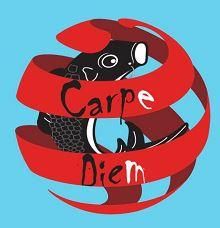Asian carp pesticide
The Problem
In 40 years the bighead and silver carp (bigheaded combined) inhabit 6,400 river miles of the Mississippi Basin and are threatening to invade the Great Lakes. The invasive fish dominate their environment changing plankton composition, out competing native filter feeding fish and denying prey to native game fish. In 2014 parts of the Illinois River, the bigheaded carp represent 60% of the fish bio-mass. The jumping silver carp are a physical hazard to boating. Without population control the bigheaded carp will invade the Great Lakes, then Canada and US East Coast rivers. After solving the bigheaded carp, MJSTI will use the technology to combat common and grass carps. Common and grass carp are an invasive species common US lakes and rivers. Common carp are "bottom feeders" that muddy waters. Grass carp de-nude vegetation from lakes and rivers causing shoreline erosion. MJSTI proved the pesticide will kill common carp by forming the beads into a pellet. Bait, corn meal and habitat will make the pesticide selective. For grass carp, a rod or ribbon will be formed using vegetation as bait. The pesticide requires United States EPA and state EPA approval. Only the US Fish and Wildlife Service and state conservation officers will be allowed to apply the pesticide. The statement is for projection of wildlife, MJSTI and consistent with most state laws.
Our Proposal
MJSTI applied for a US patent on a digestive fish pesticide. The formulation consists of two separate beads: the first is the toxin, a fat coated water insoluble basic copper carbonate and the second a fat coated solubilizing agent, preferably an amino acid. Since the fish does not taste the basic copper carbonate, it consumes the bead. The fish's digestion releases the basic copper carbonate and solubilizing agent which then form soluble copper in the fish's intestine. The soluble copper is absorbed and the fish will die. Copper ion is a micro-nutrient but an excess copper is toxic. Copper is ten times more toxic to fish than mammals. If the copper bead is not consumed, it will be removed from the "feeding station" by netting. The solublizing agent is "nutritious" fish food consisting of fat and protein. Basic copper carbonate is an FDA animal feed additive. The coating fats, lysine and glucono-delta-lactone are all FDA food additives. The average raw material cost is ~$1.5 per pound. The Aveka Group will consider manufacturing the beads. The United States Geological Survey (USGS) and MJSTI Corp are negotiating a research agreement. The competition to my project are harvesting which is expensive, dangerous and not effective and the USGS antimycin A/beeswax pesticide. Antimycin A is a highly toxic poison that the EPA de-listed in 2017. Antimycin A is not commercially available. Beeswax is in short supply and 10X the cost of the MJSTI coating fats.
We Assume that...
MJSTI has overestimated the market size (a risk). The market estimate is based on the US/Canadian sea lamprey program and conversations in the industry.
The formulation will not kill non-target fish (a risk). Particle size, bait, voracious eating carps and habitat may limit damage to non target species. Only filter feeding fish are threatened.
The EPA will approve the formulation (low risk). The formulation consists of EPA registered ingredients with low or no toxicity which should allow a fast EPA approval.
The FWS & state conservation agencies will buy the MJSTI formulation (a risk). A pesticide is needed as part of the integrated Asian carp pest plan.
The formulation will kill bighead and silver carps (low risk). The longer and thinner bighead and silver carp intestines should increase the absorption versus common carp.
A toll manufacturer will make the product (low risk). There are ~5 US toll manufacturers that spray congeal. MJSTI has an agreement with the Aveka Group.
Constraints to Overcome
Capital is the barrier that prevents commercializing the product. The EPA registering and pilot plant scale up will cost at least $200,000 and probably closer to $500,000. The agreement with the USGS is worth at least $100,000 in fish and chemical testing. MJSTI has offered the product to the USGS if the government will register the pesticide (MJSTI will obtain a royalty). MJSTI will still require capital for pilot plant trials, travel and other. MJSTI is considering selling apparel and asking for funding from industry (Inland Rivers, Ports & Terminal Association). Investors and pesticide companies have limited interest small market size. Winning this contest would help the selling of apparel and gaining an investor or donations.
Current Work
To commercialize the Asian carp pesticide. The number two goal is licence and or sell the technology to an aquatic pesticide company.
Current Needs
The number one need is capital, probably $200,000 to $500,000. MJSTI is seeking donation, in-kind work (USGS), investors, lenience agreement, sales of apparel, sales and donations. MJSTI has an nondisclosure agreement with SePro, an aquatic pesticide company. MJSTI estimated market size, $5 million per year limits interest by investors or pesticide companies. The USGS research agreement would give my project independent laboratory support and the data needed for EPA registration. MJSTI and the Thad Cochran Warmwater Aquaculture Center, Mississippi State University Extension should run a screening experiment on catfish the week of March 25 (pellet not beads). An aquaculture product may be a low cost method to generate initial but limited sales. EPA approval for private ponds is a lower threshold versus the environment.
